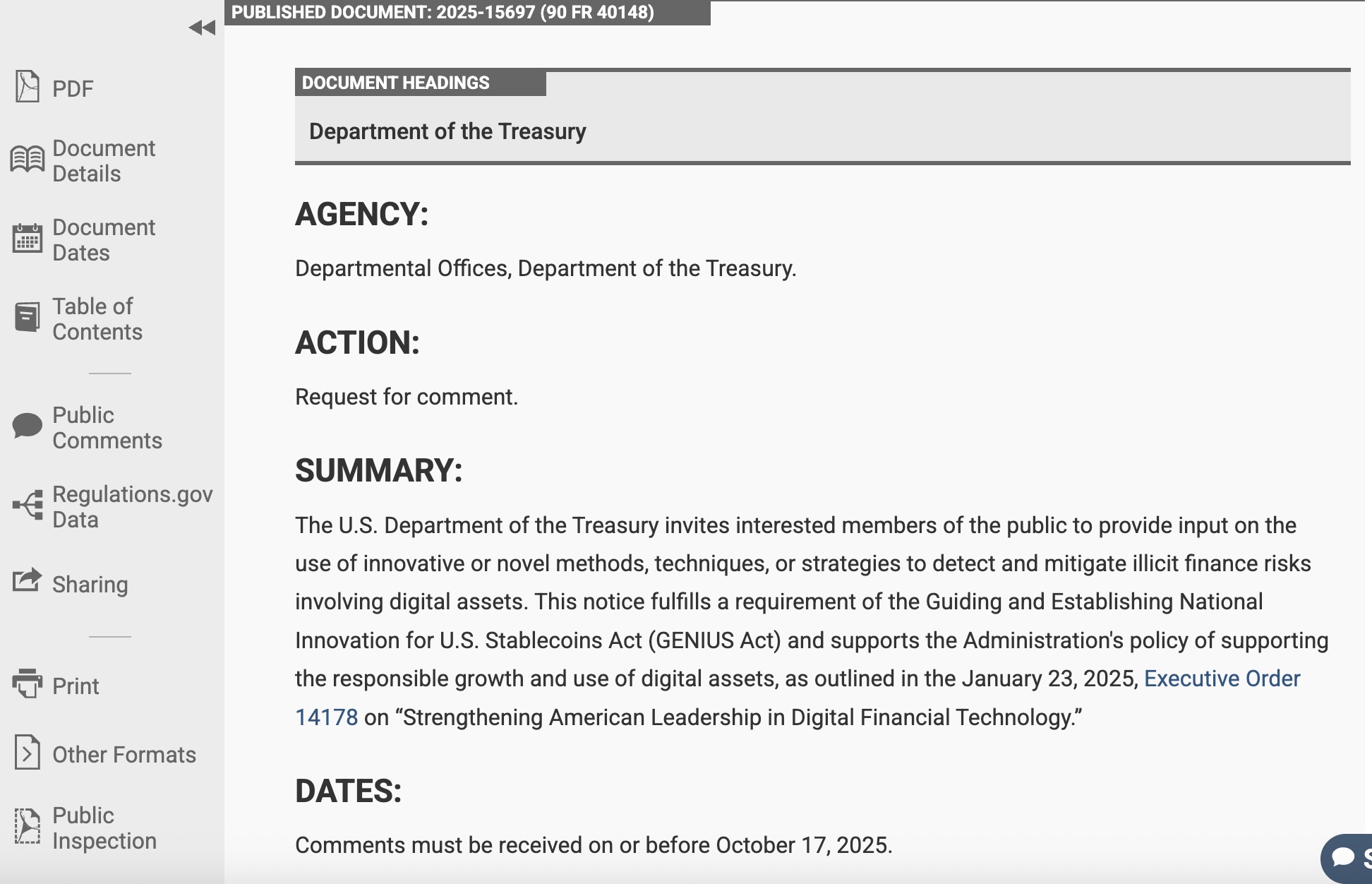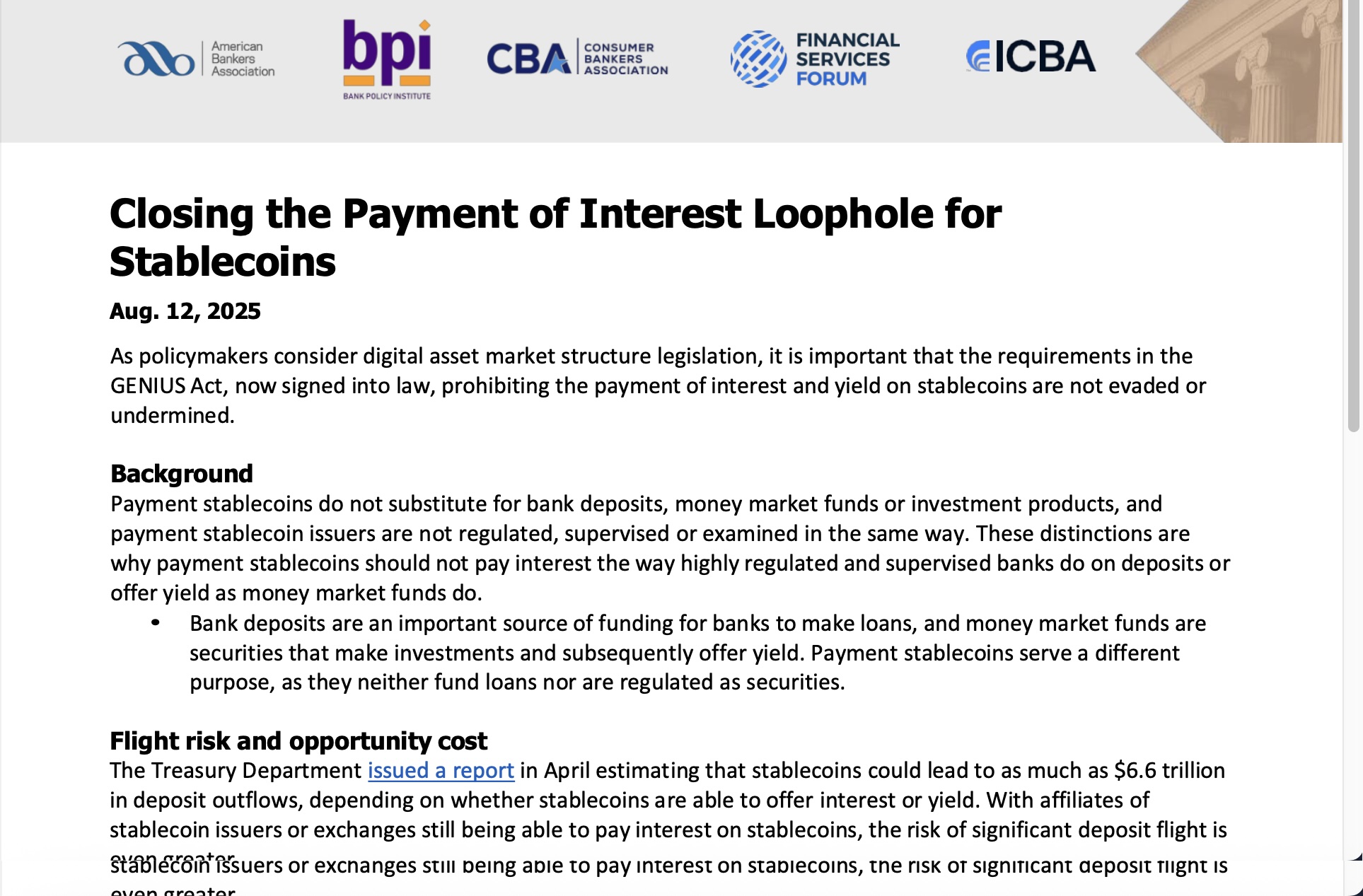How the Treasury Plans to Rein In Crypto Crime Using Digital ID

The Treasury’s new proposal focuses on tech-powered compliance in DeFi – from AI to blockchain monitoring – to catch illegal crypto transactions.
The U.S. Treasury’s Push for Digital Identity in DeFi
As decentralized finance (DeFi) becomes more deeply embedded in the global financial ecosystem, U.S. regulators are accelerating efforts to ensure the digital asset space doesn’t become a haven for illicit activity. In August 2025, the U.S. The Department of the Treasury issued a sweeping request for public comment on how innovative technologies – from AI to digital ID – can help detect and deter illegal finance in the crypto sector.
This initiative stems from the newly passed GENIUS Act, legislation designed to regulate payment stablecoins while strengthening consumer protections and U.S. national security. A key clause in the law requires the Treasury to explore how digital verification and transaction monitoring might be used by financial institutions to prevent money laundering, terrorist financing, and sanctions evasion.
“Digital identity verification tools can potentially be used by DeFi smart contracts to automatically check for a credential before executing a user’s transaction,” the Treasury wrote.
The comment window is open until October 17, 2025. Treasury will use the feedback to shape regulatory guidance, potentially altering how crypto platforms and DeFi protocols handle user onboarding and risk management.

Digital Identity Emerges as Treasury’s Top Priority
Among the four core technologies listed – AI, APIs, blockchain analytics, and identity – digital identity has emerged as a clear regulatory priority. The Treasury acknowledges that DeFi’s non-custodial structure makes it uniquely difficult to enforce conventional anti-money laundering (AML) laws.
To solve this, regulators are studying “portable digital identity credentials” that could offer both strong verification and privacy. Such credentials could allow users to authenticate without disclosing personal data to every app or protocol they use.
The Treasury is aware of efforts in the digital asset industry to develop portable digital identity credentials […] to maximize user privacy and reduce compliance burden.
If adopted broadly, these tools could allow DeFi platforms to enforce compliance directly through smart contracts, automating checks before a transaction is executed – without involving a traditional intermediary.
Banking Industry Warns of Stablecoin Loophole
While the Treasury explores how to track illicit flows, traditional financial institutions are sounding the alarm on a different front: interest-bearing stablecoins.
In a recent letter to Congress, major banking lobbies including the Bank Policy Institute (BPI) urged lawmakers to close what they see as a dangerous loophole in the GENIUS Act. While the law bans payment of interest on stablecoins by issuers, it doesn’t explicitly cover affiliated exchanges or third-party platforms. That gap, they warn, could let crypto firms sidestep the law entirely.
Without an explicit prohibition applying to exchanges, the requirements in the GENIUS Act can be easily evaded,
the letter states.
The stakes are high: the Treasury estimates that if interest-yielding stablecoins became widely available, U.S. banks could see up to $6.6 trillion in deposit flight – reducing available credit and increasing borrowing costs for businesses and households.
Incentivizing a shift from bank deposits […] to stablecoins would end up increasing lending costs and reducing loans to businesses and consumer households.

Can Compliance Tools Keep Up With Crypto?
Both Treasury officials and the banking sector agree that the existing rules weren’t designed for DeFi’s speed and structure. The push for innovation reflects a broader consensus that tools like digital identity, blockchain analytics, and AI are no longer optional.
But implementing these tools is not without cost. The Treasury acknowledges that compliance technologies can be expensive to integrate and require new expertise. Their use also raises privacy and cybersecurity concerns.
Still, the government’s stance is clear: better oversight starts with better infrastructure. As the Treasury writes:
Financial institutions can leverage these tools to protect the digital asset ecosystem from misuse by illicit actors like sanctions evaders or ransomware attackers.
The next phase of regulation will likely hinge on the success of this public comment process. Whether focused on digital ID or stablecoin yield mechanics, one thing is certain: the U.S. is no longer content to play catch-up in crypto compliance. It wants to set the rules of the road.
Comments on the Treasury’s digital finance initiative are open through October 17, 2025.
Content on BlockPort is provided for informational purposes only and does not constitute financial guidance.
We strive to ensure the accuracy and relevance of the information we share, but we do not guarantee that all content is complete, error-free, or up to date. BlockPort disclaims any liability for losses, mistakes, or actions taken based on the material found on this site.
Always conduct your own research before making financial decisions and consider consulting with a licensed advisor.
For further details, please review our Terms of Use, Privacy Policy, and Disclaimer.



























